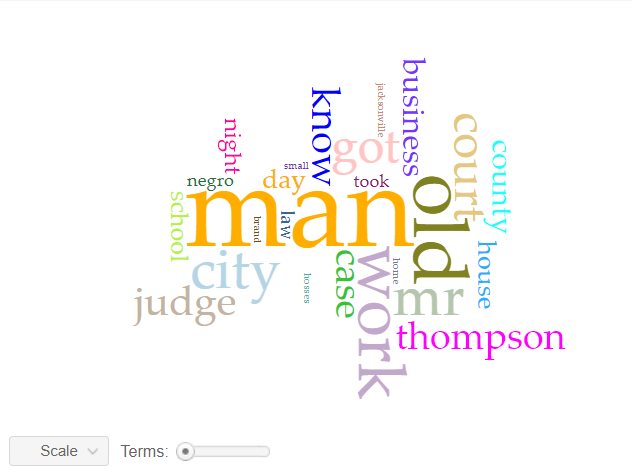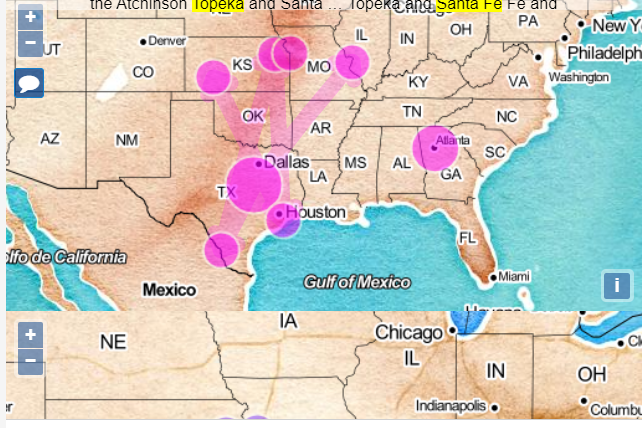When I used to hear the words “history” and “the Great Depression” I would instantly tune out any information following the matter because I have never been one to be interested in history. I never thought about history further than the word. I never thought about the process of digitization or how important archives are. I especially never thought to combine history with my major, criminology, and form a research project out of it. I think this class not only taught me the importance of digitizing history, but also many different ways (skills) in which we do so.
My final project was an exhibit that was centered around the question “how did the New Deal influence crime rates?”. According to History.com, “During the Great Depression, with much of the United States mired in grinding poverty and unemployment, some Americans found increased opportunities in criminal activities like bootlegging, robbing banks, loan-sharking—even murder”(2018). When Franklin D. Roosevelt implemented the New Deal, one of the purposes was to deter crime in the slums through his housing plans. In my exhibit, I showcased three skills I learned over the course of the semester: image annotation, mapping, and image glitching.
Image annotation is describing and illustrating ideas on a picture through annotations rather than paragraphs of analysis. I chose to use image annotation as my first skill as a way to address and introduce the historical argument of the fact that the New Deal had a positive impact on crime rates in the sense that it lowered them. The image I chose for my image annotation skill depicts a man of color being arrested during a protest. The image was taken after the New Deal was implemented. While the man is being arrested in the picture, no true crime is being committed. This supports the argument on the fact that the New Deal lowered crime rates. It can be concluded that while the New Deal can be seen to have lowered crime rates, it gave way to a rise in protests and therefore can be seen to have raised arrest rates.
Mapping is a little more complicated than image annotation. Mapping is the use of pictures depicting historical events being placed in a geographic location relevant to their history and using these locations to tell a story or show a pattern of a broader historical event. I chose to use the mapping skill in my exhibit as a way to relate how the map showcases the argument/question through a pattern of location. The map I created showcases the impact of the New Deal through three different images. The pattern shown between these three images can be seen as the first two represent the attempt to deter and prevent crime while the third shows the great impact on the implementation of the New Deal as the image depicts no real crime being committed because there is nothing illegal about protesting.
Image glitching, in my opinion, is more of an artistical take on the digitization of history in the sense that I believe it tells a story through the glitched image. How glitching works is you simply take any regular image and edit the code to where it “distorts” the image in a sense. I wanted to use this skill to show how the glitched image portrays the argument upon the question of how crime was influenced by the Great Depression. The image I chose is one of the slums behind the Metropolitan Police Department. The New Deal, as stated by the posters in the map, was partially set in place to “solve crime” in the slums. Therefore, the glitched picture of the slums is an artistic representation of the rebuilding and rebirth of a new “house” in the sense that it depicts the destruction and rebuilding process of these slums on behalf of the New Deal.
After taking this class, I have become more aware of the importance of digitizing history. I believe that by digitizing history, we not only make it more available to the public, but the fragility and limitation of it is eliminated entirely as it is made “infinite” in a sense on the internet. I find the many skills in which we use to digitize history artistically appealing and educationally appealing because it stimulates different learning styles through each skill and shows history from a different perspective as well.
http://jessicadoeshistory.com/cnd/exhibits/show/hdietz/intro
Crime in the Great Depression—HISTORY. (n.d.). Retrieved December 12, 2019, from https://www.history.com/topics/great-depression/crime-in-the-great-depression



